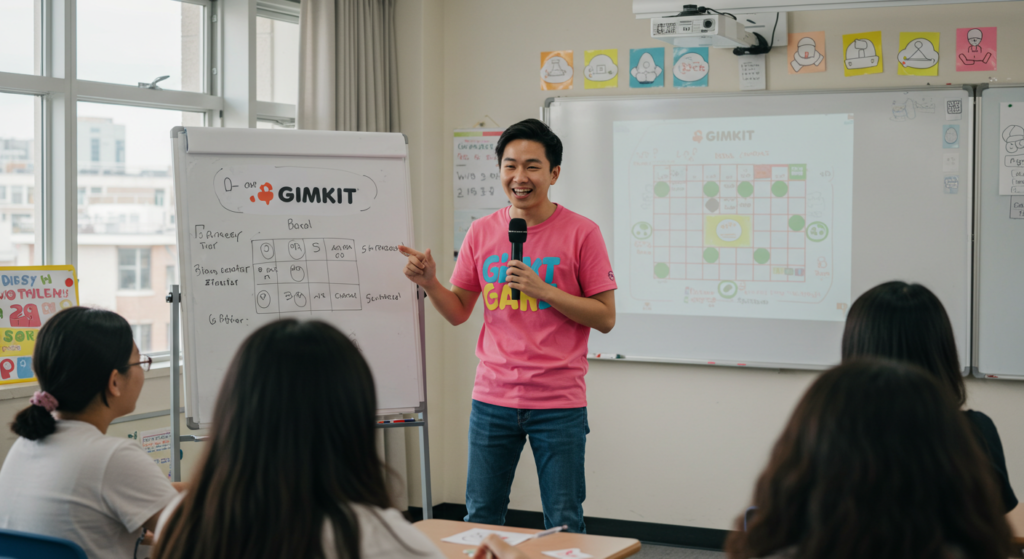Introduction
The rise of gamified learning tools has transformed classrooms across America, making lessons more engaging, interactive, and effective. Among these tools, Gimkit has emerged as a favorite for teachers and students alike. At the heart of this platform is the Gimkit host feature, which allows educators to take control of the game experience, manage live sessions, and monitor progress in real time. A Gimkit host is more than just a facilitator—they set the tone, pace, and overall energy of the activity, making them central to how successful the session becomes.
When used correctly, being a Gimkit host can turn a routine review session into an exciting competition that students genuinely look forward to. Unlike traditional quizzes, Gimkit encourages participation by rewarding correct answers with in-game currency, which students can use for upgrades and strategies. This dynamic adds an extra layer of motivation, especially when guided by an engaging host. Whether you’re a new teacher exploring the platform or an experienced educator looking to sharpen your skills, understanding the role of a Gimkit host can completely change how you run your classroom.
The keyword “Gimkit host” may sound simple, but it represents a combination of technical know-how, classroom management, and creative teaching. Hosting requires preparation—choosing the right game mode, crafting questions that align with learning goals, and keeping the pace engaging without overwhelming students. When all these elements come together, hosting transforms into a powerful teaching strategy. This article will walk you through everything you need to know about being an effective Gimkit host, from setup to best practices and tips for maximizing student learning.
Understanding the Role of a Gimkit Host
A Gimkit host acts as the guide and moderator of an interactive learning session. They initiate the game, ensure players join correctly, and monitor the activity as it unfolds. Much like a game show host, they provide direction and set the overall vibe of the event. Without a host, Gimkit loses its structure, since someone must be responsible for keeping the session organized and purposeful. Hosting is therefore not just a technical role but also an educational one.
When you take on the role of a Gimkit host, you’re not only pressing buttons to start or end the game—you’re facilitating a unique learning experience. Students rely on the host to explain rules, troubleshoot technical issues, and maintain excitement throughout. Effective hosting often involves encouraging reluctant students, celebrating achievements, and balancing fun with focus. This balance is what makes Gimkit an excellent blend of entertainment and education when led by the right host.
Setting Up a Game as a Gimkit Host
Before you can dive into hosting, preparation is key. A Gimkit host begins by selecting or creating a kit—essentially a quiz that forms the foundation of the game. Teachers can build their own or choose from a vast library of pre-made kits tailored to subjects ranging from math to history. Once the kit is ready, the host selects a game mode, which determines how the activity will unfold. Each mode has its unique features, from timed challenges to collaborative play, allowing customization for different learning objectives.
After setting up the kit and mode, the Gimkit host generates a game code for students to join. This step is critical because a smooth entry process sets the tone for the session. Any delays or confusion at this stage can cause frustration. Once all participants have logged in, the host officially starts the game. From there, the responsibility shifts to maintaining flow, ensuring technical stability, and observing student engagement levels. Successful setup is like laying the foundation for a house: without it, the structure won’t hold.
Engaging Students During Gameplay
An effective Gimkit host knows that engagement doesn’t happen by accident. It requires active involvement throughout the session. For example, hosts can pause at key moments to highlight high scores, encourage students who are lagging, or celebrate strategic moves. This keeps everyone motivated and prevents the game from becoming just another online quiz. Hosting is about building momentum and ensuring no student feels left out.
Equally important is the ability to read the room. If students appear disengaged or overwhelmed, the host can adjust settings, tweak the pace, or even switch game modes. Gimkit allows flexibility, but it’s the host who decides when and how to make changes. By maintaining a supportive and inclusive atmosphere, the host transforms the game into a tool for reinforcing knowledge rather than just competition. Engaged hosting ensures that the educational value of Gimkit stays at the forefront.
Managing Classroom Dynamics as a Gimkit Host
While Gimkit is designed to be fun, the Gimkit host must also maintain classroom discipline. Interactive games can quickly become chaotic if students focus solely on winning rather than learning. The host plays a crucial role in setting boundaries, reminding participants of the educational goals, and ensuring respectful play. Clear communication about rules and expectations before starting the game can prevent most issues.
On the flip side, a Gimkit host can also use the platform to strengthen positive classroom culture. By recognizing teamwork, rewarding effort, and promoting sportsmanship, hosts can foster a collaborative spirit. This is especially important in group settings where competitive energy might run high. By blending fun with structured learning, the host ensures the classroom remains both lively and productive. In this way, hosting becomes a teaching strategy rather than just a digital add-on.
Maximizing Learning Outcomes Through Hosting
Being a Gimkit host isn’t just about entertainment—it’s about improving academic performance. Research shows that gamified learning can increase retention and engagement significantly. As a host, you have the power to design sessions that directly align with curriculum goals. For instance, hosting a Gimkit review before exams can reinforce key concepts and boost confidence in a low-pressure setting.
Additionally, Gimkit provides data that hosts can analyze after each session. Reviewing student performance allows hosts to identify areas of strength and weakness. This feedback is invaluable for tailoring future lessons. By combining real-time hosting with data-driven insights, a Gimkit host can continuously refine their teaching strategy, ensuring that each game contributes meaningfully to student learning.
Tips for Becoming a Successful Gimkit Host
Success as a Gimkit host comes down to preparation, adaptability, and enthusiasm. One best practice is to test the game yourself before hosting it with students. This ensures you understand how the chosen mode works and can anticipate potential challenges. Another tip is to vary game modes regularly, so sessions stay fresh and students remain curious about what’s next.
Equally important is injecting your personality into hosting. Students respond better to energy and authenticity. Don’t be afraid to add humor, share anecdotes, or create small traditions around gameplay. These elements make the experience memorable and foster stronger connections between teacher and students. Hosting is part performance, part teaching strategy, and when done well, it leaves a lasting impact.
Common Mistakes Gimkit Hosts Should Avoid
Even the most well-meaning hosts can make mistakes that hinder learning. One common issue is focusing too much on the game aspect while neglecting the educational purpose. If students leave having had fun but not reinforced knowledge, the session hasn’t achieved its true goal. Another mistake is starting without clear rules, which can lead to confusion and wasted time.
Technical mishaps are another frequent challenge. A Gimkit host should always check their internet connection, audio setup, and kit design before launching a session. Skipping these steps can disrupt the flow and frustrate students. By being proactive and mindful, hosts can avoid these pitfalls and create smooth, effective experiences that balance learning and fun.
Conclusion
Being a Gimkit host is more than pressing “start” on a digital game. It’s about blending entertainment with education, keeping students engaged, and guiding them toward meaningful learning outcomes. From setting up the right kit to reading the classroom’s energy, hosting requires preparation, adaptability, and enthusiasm. A good host transforms Gimkit from a simple quiz app into a powerful teaching tool that builds knowledge while boosting motivation.
If you’re an educator looking to elevate your classroom experience, embracing the role of a Gimkit host could be a game-changer. Start small, experiment with modes, and focus on creating balance between fun and learning. With practice, you’ll not only keep your students engaged but also leave them excited for the next session. Hosting is more than a role—it’s an opportunity to shape how students learn in the digital age.







